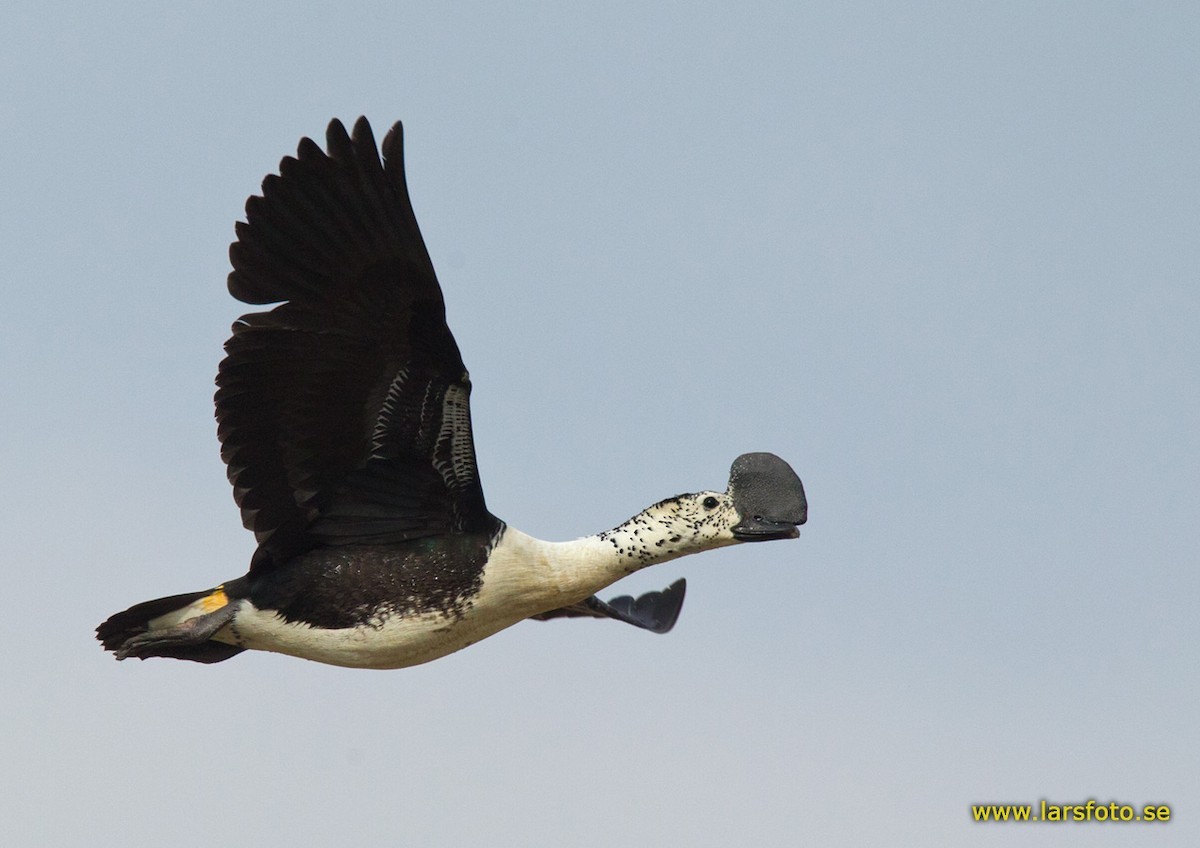Comb Duck
A species of Comb Ducks Scientific name : Sarkidiornis sylvicola Genus : Comb Ducks
Comb Duck, A species of Comb Ducks
Botanical name: Sarkidiornis sylvicola
Genus: Comb Ducks
Content
Description General Info
 Photo By Lars Petersson
Photo By Lars Petersson Description
This common species is unmistakable. It is one of the largest species of duck. Length can range from 56 to 76 cm (22 to 30 in), wingspan ranges from 116 to 145 cm (46 to 57 in) and weight from 1.03 to 2.9 kg (2.3 to 6.4 lb). Adults have a white head freckled with dark spots, and a pure white neck and underparts. The upperparts are glossy blue-black upperparts, with bluish and greenish iridescence especially prominent on the secondaries (lower arm feathers). The male is much larger than the female, and has a large black knob on the bill. If seen at a distance, immature comb ducks can also be mistaken for a fulvous whistling duck (Dendrocygna bicolor). However, knob-billed ducks in immature plumage are rarely seen without adults nearby and thus they are usually easily identified, too. Uncertainty surrounds the correct systematic placement of this species. Initially, it was placed in the dabbling duck subfamily Anatinae. Later, it was assigned to the "perching ducks", a paraphyletic assemblage of waterfowl most of which are intermediate between dabbling ducks and shelducks. As the "perching ducks" were split up, the comb duck was moved to the Tadorninae or shelduck subfamily. Analysis of mtDNA sequences of the cytochrome b and NADH dehydrogenase subunit 2 genes, however, suggests that it is a quite basal member of the Anatidae, vindicating the earliest placement, but its closest living relatives cannot be resolved to satisfaction without further study. 
Size
627 mm (male), 550 mm (female)
Nest Placement
Tree
Feeding Habits
Comb Duck grazes on grass seeds, sedges, and aquatic plants, such as rice and grain. This diet is complemented by foraging for both terrestrial and aquatic invertebrates, showcasing versatile feeding behaviors suited to diverse habitats.
Habitat
Comb Duck primarily inhabits a broad range of freshwater environments such as marshes, lagoons, river deltas, and floodplains that are seasonally inundated. These habitats often include forested rivers and man-made landscapes like rice fields. Comb Duck favors regions with ample perching options, such as areas rich in trees and vegetation structure. The species tends to coexist with other waterfowl including whistling-ducks and sometimes Orinoco Geese within these ecosystems.
Dite type
Omnivorous